Top Methods for Building a Sustainable Farm in 2025
Standing in my family’s farmland, I saw the sunrise paint golden hues across acres. Sustainability isn’t just a buzzword—it’s our lifeline. The agriculture landscape is changing, and your sustainable farm is more than a business. It’s a commitment to the environment and future generations.
In 2025, building a sustainable farm needs strategic thinking and new ideas. Farmers are now ecosystem managers, not just food producers. Your journey will require careful planning, using technology, and understanding ecological balance.
The future of farming is about balancing productivity with environmental care. By adopting sustainable practices, you’re not just growing crops. You’re building resilience, protecting resources, and creating a model that can face climate challenges.
Key Takeaways
- Sustainability is a holistic approach to agricultural production
- Technology plays a critical role in modern sustainable farming
- Environmental protection and economic viability can coexist
- Adaptability is crucial for agricultural success in 2025
- Sustainable practices benefit both farmers and ecosystems
Understanding Modern Sustainable Agriculture Principles
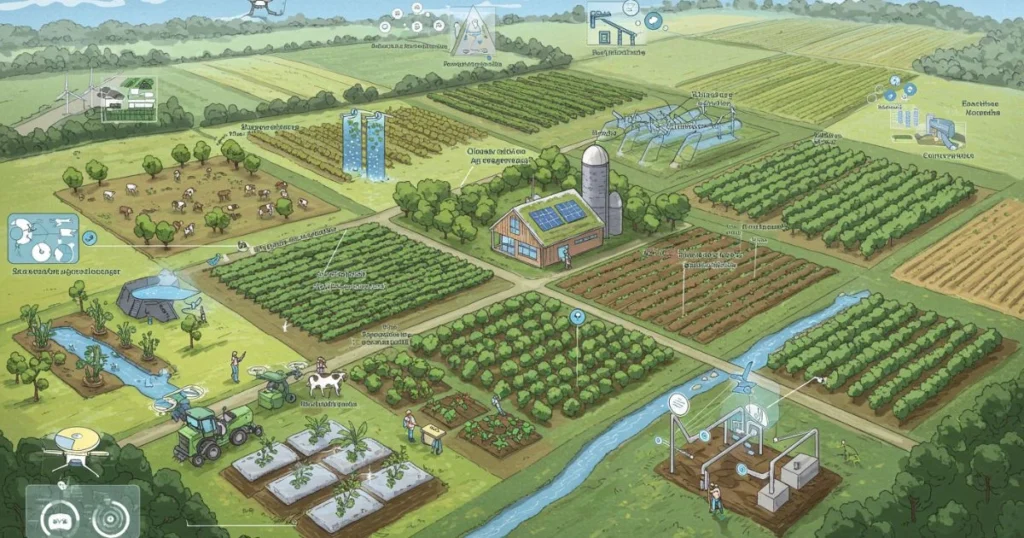
Sustainable agriculture is a way of farming that cares for the environment, makes money, and helps people. It starts with knowing the main ideas behind today’s farming.
Today, farming is more than just growing food. It’s about solving big problems like food security and protecting the planet. Farmers know they must build strong and green farming systems to succeed.
Key Components of Agricultural Sustainability
The heart of sustainable agriculture includes:
- Protecting the environment and conserving resources
- Making money for farmers
- Helping communities and being fair
- Using resources wisely and cutting down waste
Environmental Impact Assessment Methods
It’s important to know how your farm affects the planet. You can use:
- Calculating carbon footprint
- Tracking water use
- Monitoring biodiversity
- Checking soil health
Economic Viability in Sustainable Farming
Sustainable farming is good for the planet and can also make money. By using smart methods, you can save on costs, grow more food, and build a stable farm business.
*Sustainable agriculture is about creating harmony between ecological responsibility and economic success.*
Essential Planning Steps for Your Sustainable Farm
Starting a sustainable farm needs careful planning. Your journey into sustainable farming starts with a detailed plan. This plan covers many important aspects of farm development.
First, do a thorough site assessment. Look at your land’s potential for sustainable farming. Check:
- Soil quality and composition
- Water resources and drainage patterns
- Topographical characteristics
- Local climate conditions
- Potential crop and livestock compatibility
Next, make a detailed resource inventory. List all available resources, like water, energy, and infrastructure. Knowing your resources helps make your farm more efficient and eco-friendly.
Financial planning is also key. Create a solid business plan. It should include:
- Initial investment needs
- Possible income sources
- Costs for equipment and technology
- Day-to-day expenses
- Long-term goals for sustainability
It’s wise to get advice from agricultural experts in sustainable farming. They can help improve your plan, spot challenges, and make your farm more resilient.
Successful sustainable farms are built on meticulous planning, deep ecological understanding, and adaptive management techniques.
Sustainable farming is a continuous learning and adapting process. Your initial plan should be flexible. This allows for ongoing improvement and new ideas in farm management.
Implementing Renewable Energy Systems in Agriculture
Turning your farm into a green energy leader needs a smart plan. Today’s farms must use new ways to make power. This cuts down on harm to the environment and saves money.
Renewable energy lets farmers make their farms work on their own. By using different energy sources, farms can be strong and green.
Solar Power Integration for Farm Operations
Solar power is changing how farms work. It brings big benefits like:
- Lowering electricity bills
- Less carbon emissions
- Extra money from selling extra power
Solar panels can run water systems, tools, and storage. Ground-mounted and roof-installed solar arrays fit any farm layout.
Wind Energy Solutions for Agricultural Use
Small wind turbines are a great renewable energy choice. Farms with open spaces can use wind power to:
- Make steady electricity
- Help solar power
- Earn more money
Biomass Energy Opportunities
Turning farm waste into energy is a smart move. It uses crop leftovers, animal manure, and special crops for biogas and electricity. This makes a complete energy circle.
Smart farmers see renewable energy as a smart business move, not just good for the planet.
Water Conservation and Management Techniques
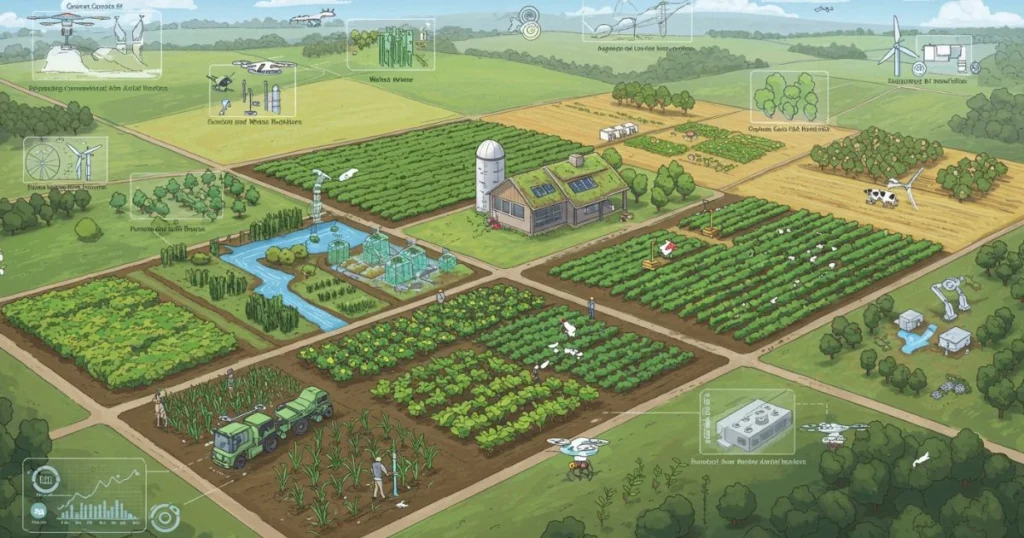
Water is key to sustainable farming. Farmers in the U.S. are finding new ways to use water wisely. This helps protect their land and crops.
Using water well needs smart planning and new tech. Today’s farms use systems that save water and work better.
- Drip irrigation systems reduce water consumption by up to 50%
- Rainwater harvesting captures precious moisture for crop cultivation
- Precision sensors monitor soil moisture levels in real-time
- Greywater recycling provides alternative irrigation sources
Water and farming go hand in hand. Smart farmers use methods that save water and help nature. They use water carefully to keep crops healthy.
Water-efficient farms show that caring for the environment and growing food can go together.
Good water management means more than just saving water. It includes:
- Regular water checks
- Choosing crops that need less water
- Designing land to keep water in place
- Using mulch to keep soil moist
Every water-saving step makes farming better for the future. By focusing on water, you help your farm and the planet.
Soil Health Management and Regenerative Practices
Sustainable agriculture focuses on keeping soil healthy. Good soil management turns your farm into a thriving ecosystem. It’s the key to productive and lasting farming.
Managing soil well means more than just farming. Regenerative practices help restore soil and make farming sustainable for the long run.
Cover Cropping Strategies
Cover crops are vital for soil health in sustainable farming. They offer many benefits:
- Prevent soil erosion
- Improve soil structure
- Enhance nutrient cycling
- Suppress weed growth
- Attract beneficial insects
Organic Matter Management
Organic matter is essential for healthy soil. Your composting can greatly boost soil fertility and structure. Key approaches include:
- Regular compost application
- Integrating crop residues
- Using organic amendments
- Maintaining diverse microbial ecosystems
Minimal Tillage Approaches
Conservation tillage reduces soil disturbance and helps sequester carbon. It keeps soil structure intact, holds moisture, and supports beneficial microbes. This is crucial for sustainable farming.
Healthy soil is not just dirt—it’s a living, breathing ecosystem that sustains agricultural productivity.
Building a Sustainable Farm Infrastructure
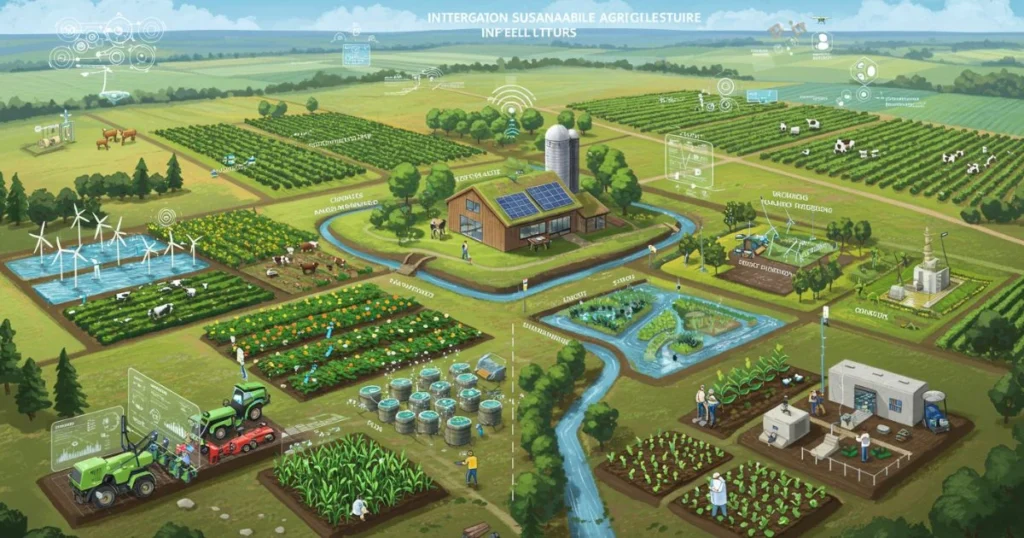
Creating a sustainable farm needs careful planning and new ideas. Your farm’s buildings and structures are key to its sustainability. Modern farms use eco-friendly designs to lessen their environmental footprint.
Important steps for a sustainable farm include:
- Energy-efficient building design
- Renewable material selection
- Integrated green technologies
- Waste reduction strategies
Choose materials that cut down on carbon emissions. Reclaimed wood, recycled steel, and local materials help a lot. Use passive solar design to get more natural light and control temperatures.
“Sustainable infrastructure is not just about construction, but about creating a holistic ecosystem that supports both agricultural productivity and environmental preservation.”
Technology is vital for a modern sustainable farm. Smart buildings with sensors track energy and conditions. Solar panels, rainwater systems, and insulation make buildings green and efficient.
- Install solar roof panels
- Use recycled building materials
- Implement natural ventilation systems
- Design for energy efficiency
Your farm’s infrastructure should be flexible and efficient. With smart design and green tech, you can build a sustainable farm for the future.
Smart Technology Integration for Farm Efficiency
Modern agriculture is going through a big change thanks to technology. Smart tools are key for farmers to work better and make their farms more efficient.
Now, farmers can use data to make better choices. This helps them use resources wisely and grow more food.
IoT Solutions for Agriculture
Internet of Things (IoT) is changing how farms are run. These smart systems give farmers real-time info on important farm details:
- Soil moisture and nutrient tracking
- Crop health monitoring
- Precision irrigation management
- Livestock tracking and health assessment
Automated Monitoring Systems
Automated systems can make your farm run smoother. Sensors and smart networks help you:
- Detect problems early
- Use resources better
- Need less manual work
- Have less impact on the environment
Data-Driven Decision Making
Collecting and analyzing farm data gives you valuable insights. Advanced analytics platforms help you understand farm patterns. This lets you choose the best crops and manage them better.
Smart technology is not just about collecting data—it’s about turning information into useful farm knowledge.
Sustainable Crop Selection and Rotation
Starting a successful sustainable farm begins with picking the right crops and rotating them. Understanding the balance between soil health, crop variety, and managing ecosystems is key.
Choosing the right crops for your climate and soil is essential. Think about these important factors for your crop rotation:
- Local climate resilience
- Soil nutrient requirements
- Water conservation needs
- Pest resistance potential
Crop rotation is vital for sustainable farming. It helps by naturally:
- Restoring soil nutrients
- Reducing pests
- Lowering chemical use
- Boosting farm biodiversity
Nitrogen-fixing plants like legumes are crucial for sustainable farms. They help the soil by reducing the need for synthetic fertilizers. Adding cover crops like clover, alfalfa, and beans can change how you farm.
Modern sustainable agriculture needs a holistic approach to crop management. It focuses on long-term ecosystem health over quick gains.
Thoughtful crop rotation strategies make your farm more resilient. They support both the environment and your farm’s financial health.
Eco-friendly Pest Management Strategies
Keeping your sustainable farm safe from pests needs new and green ways. It’s about managing pests in a way that keeps the ecosystem balanced and your crops healthy.
Good pest control is more than just using chemicals. Today’s farms use methods that work with nature, not against it.
Biological Control Methods
Biological pest control uses nature’s own ways to fight pests. Your farm can use:
- Introducing helpful insects that eat pests
- Using tiny microbes that target pests
- Helping natural predators live in your crops
Integrated Pest Management Systems
Integrated pest management (IPM) mixes different methods for a strong pest control plan. It helps reduce harm to the environment while keeping your crops safe.
- Watching pest numbers closely
- Using specific strategies to fight pests
- Using fewer chemicals
Natural Deterrent Techniques
Your farm can use natural ways to keep pests away without chemicals:
- Planting crops together to stop pests
- Using natural barriers to keep pests out
- Creating trap crops to catch pests
By using these green pest control methods, your farm will be strong and healthy. It will help your crops grow and protect the environment too.
Marketing Your Sustainable Farm Products
Sustainable farming is more than just growing food. It’s a way to market your farm. Today, people want to buy food that’s good for the planet. So, your farm’s green approach can really help you sell.
To build a strong brand, talk openly about how you farm sustainably. Here are some marketing tips:
- Tell a story about your farm’s green commitment
- Show off any certifications that prove your practices are green
- Share your story in a way that connects with people who care about the environment
Online platforms are great for showing off your farm’s green side. Here’s how to make a splash online:
- Use social media to share how you farm
- Have a website that explains your mission to go green
- Send out newsletters with updates and tips on sustainable living
Connecting directly with customers is key in green farming marketing. Get involved in local markets, start a CSA program, and build personal relationships. These actions show the value of your eco-friendly food.
Your farm’s unique story of environmental stewardship is your most powerful marketing tool.
By sharing your true commitment to green farming, you’ll draw in customers who care about quality and the planet.
Conclusion
Your journey into sustainable agriculture is more than just farming. It’s a way to make farms strong and good for the environment. These farms can do well in 2025 and beyond.
Sustainable farms are about more than just growing food. They aim to keep the environment healthy while making money. This balance is key to their success.
This guide shows how farming can change for the better. By using green energy, smart tech, and caring for soil, you can make farming better for the planet. Every choice you make helps make food production more responsible.
Choosing sustainable agriculture is not just for your farm. It helps solve big problems like climate change and food security. You’re part of a big change in farming across the U.S.
To make your farm sustainable, keep learning and trying new things. Start small and stick to your green goals. Your farm can show everyone how to farm in a way that’s good for the planet.
FAQ
What defines a sustainable farm in 2025?
A sustainable farm in 2025 uses green practices, is financially sound, and cares for the community. It runs on renewable energy, grows crops in a way that regenerates the soil, and uses fewer chemicals. It also saves water, keeps the soil healthy, and makes money while helping the local area.
How much initial investment is required to transition to a sustainable farm?
The cost to start a sustainable farm varies based on its size and setup. You might spend between $50,000 and $250,000 on green upgrades like solar panels, efficient water systems, and soil improvement tools. Many farms get help from government grants, tax breaks, and higher prices for their green products.
What renewable energy options work best for agricultural operations?
Solar and wind energy are top choices for farms. Solar panels can power the farm, and small wind turbines can help too. Using farm waste to make energy is also a smart move, turning organic materials into energy.
How can I improve soil health on my farm?
To better your soil, try regenerative farming methods like planting cover crops, using less tillage, and rotating crops. Adding organic matter and managing it well also helps. These steps improve soil structure, nutrient levels, and water retention, boosting your farm’s health and productivity.
Are sustainable farming practices economically viable?
Yes, sustainable farming can be very profitable. It cuts down on costs, makes crops more resilient, and opens up high-value markets. Plus, it qualifies for green incentives, leading to more money in your pocket. Many farms see their profits rise thanks to lower chemical costs and higher prices for green products.
What technologies can help make my farm more sustainable?
Smart tech like IoT sensors, automated systems, and data tools can make your farm greener. They help you use resources better, keep an eye on soil and crops, cut waste, and make smarter choices. This boosts your farm’s efficiency and eco-friendliness.
How do I market sustainable farm products?
To sell your green farm products, create a strong brand that shows you care about the planet. Get eco-labels, sell directly at farmers’ markets and through CSAs, and use online platforms. Teach customers about your green practices and the value of your products to build a loyal fan base.
What are the biggest challenges in transitioning to a sustainable farm?
The main hurdles include the upfront costs, learning new farming ways, getting used to new tech, and dealing with short-term yield drops. But, with good planning, learning resources, joining green farming groups, and slow changes, you can overcome these obstacles.

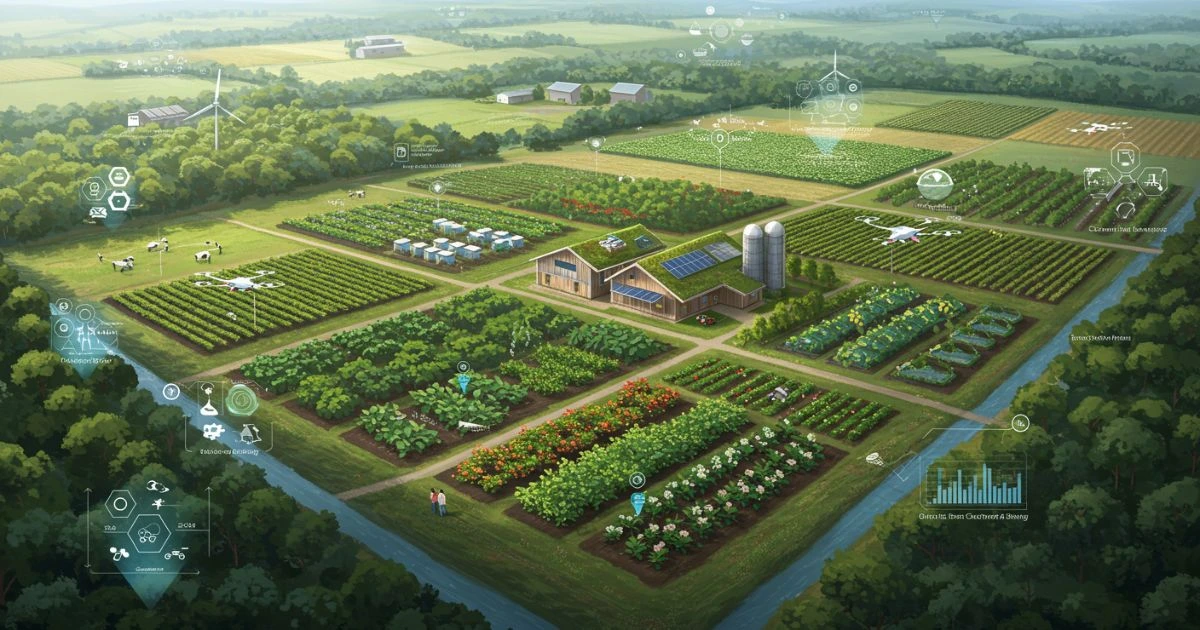
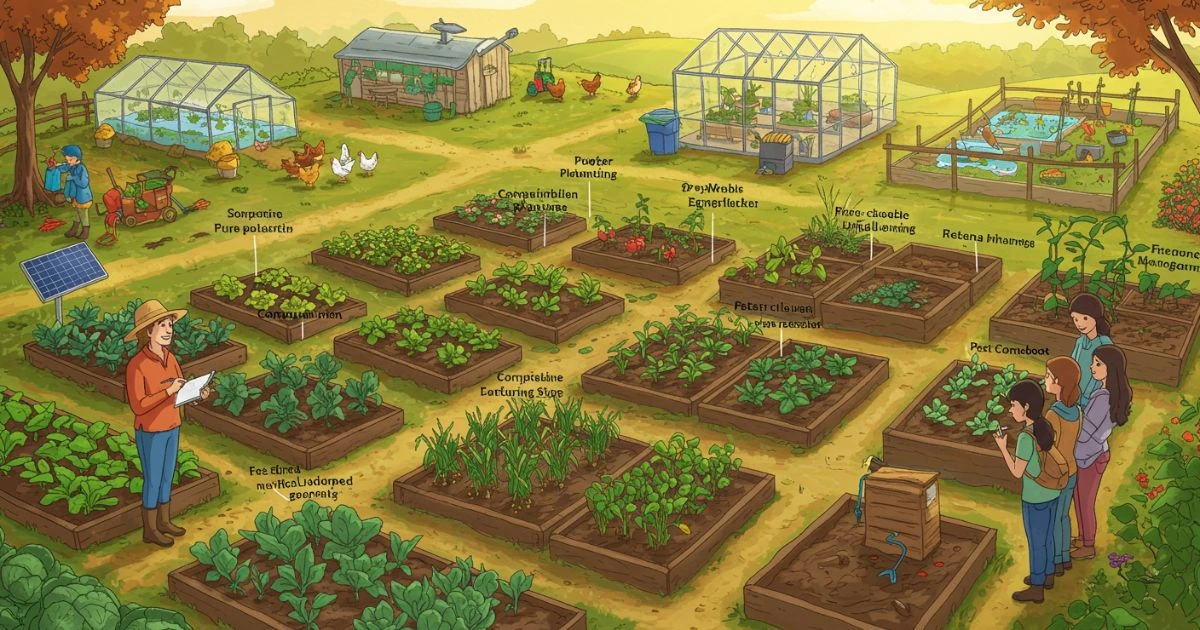
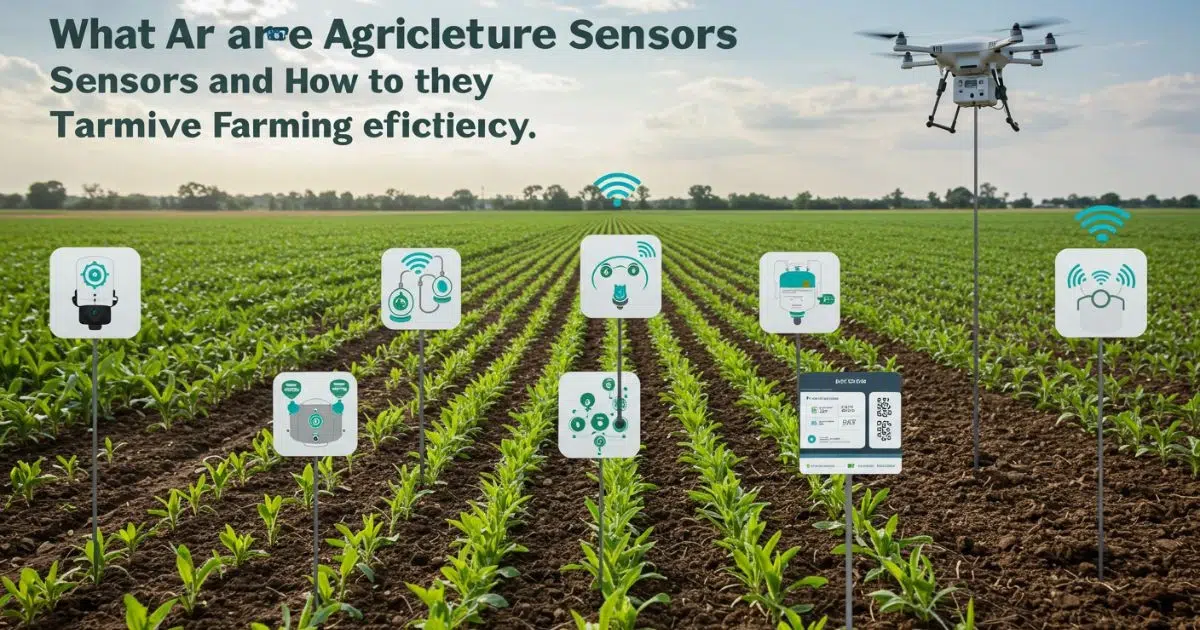
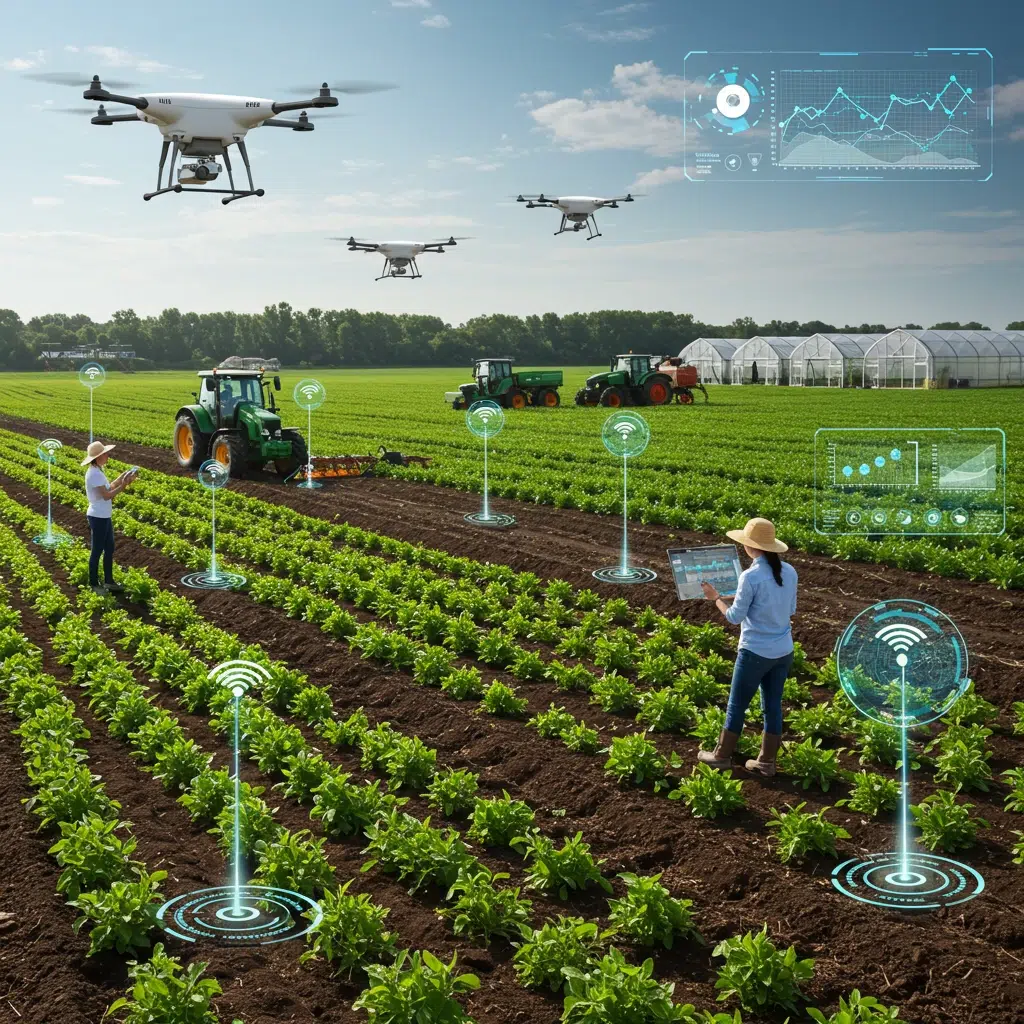
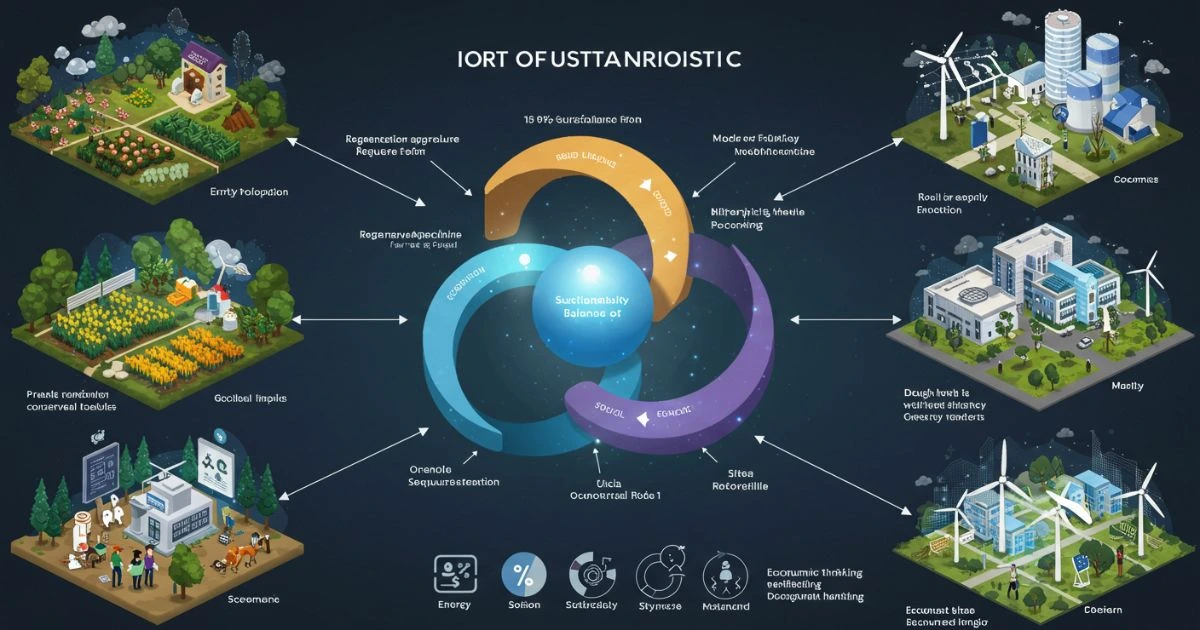
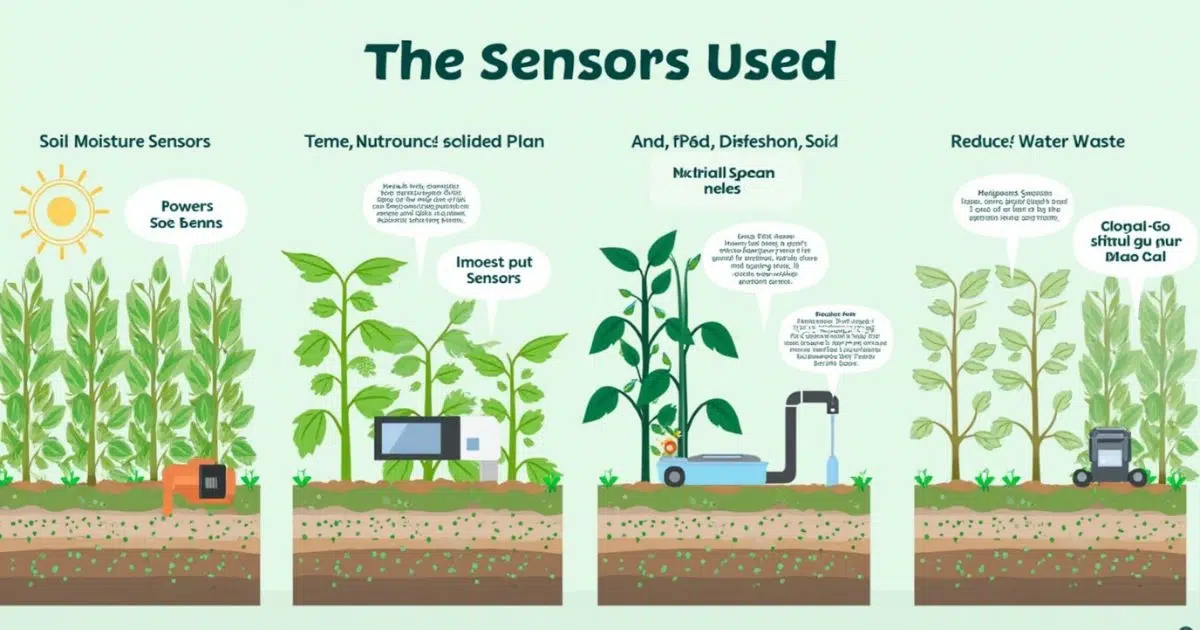
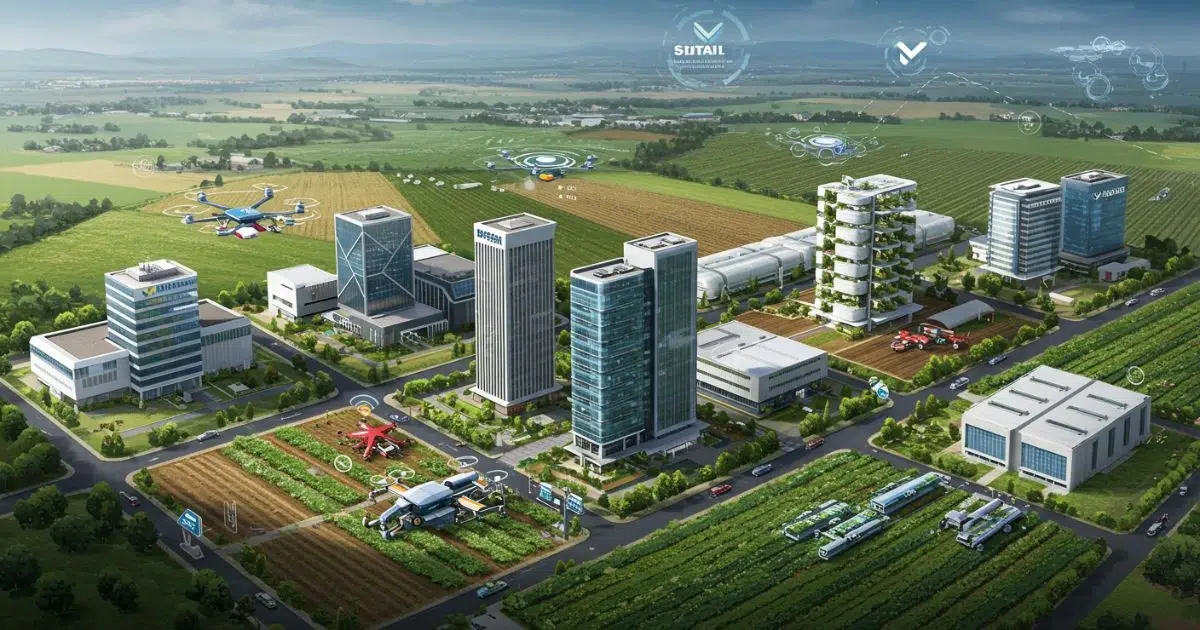
Leave a Reply